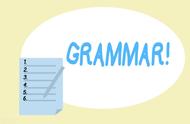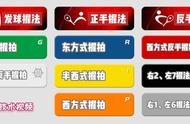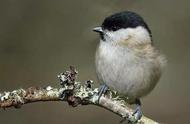一、英语数词定义
数词主要分为基数词和序数词两大类,表示数量或顺序,可以作主语、宾语、表语、定语、状语和同位语使用。举例:
There are 3 apples on the desk.
Linda is in the third class.
二、英语数词分类
(一)基数词
1.基数词的概念
基数词指表示数量、编号、时刻、运算等的词,主指数量,后可接可数名词单数或复数。
2.基数词的具体形式
(1)from zero to twelve(0~12)
零到十二,单词需要独立记忆:0--zero, 1--one, 2--two, 3--three, 4--four, 5--five, 6--six, 7--seven, 8--eight, 9--nine, 10--ten, 11-eleven,12-twelve.
(2)from thirteen to nineteen(13~19)
十三到十九,以teen结尾:13--thirteen, 14--fourteen, 15--fifteen, 16--sixteen, 17--seventeen, 18--eighteen, 19--nineteen.
(3)from twenty to ninety-nine(20~99)
①二十到九十且为10的整数倍,以ty结尾:20--twenty, 30--thirty, 40--forty, 50--fifty, 60--sixty, 70--seventy, 80--eighty, 90--ninety.
②十位数和个位数之间用连字符-连接:21/twenty-one~29/twenty-nine, 31/thirty-one~39/thirty-nine, 41/forty-one~49/forty-nine, 51/fifty-one~59/fifty-nine, 61/sixty-one~69/sixty-nine, 71/seventy-one~79/seventy-nine, 81/eighty-one~89/eighty-nine, 91/ninety-one~99/ninety-nine等。
(4)from one hundred to infinity(100-∞)
①大于一百且为100的整数倍,可以用hundred/thousand/million/billion为单位去表达:100/one hundred→1,000/one thousand→1,000,000/one million→1,000,000,000/one billion→∞
②其他大于100的基数词,通常用hundred/thousand/million/billion为单位去表示为100整数倍的百位/千位/百万位/十亿位,百和个位数/十位数之间用and连接,个位数和十位数用连字符-连接:101/one hundred, 9999/nine thousand nine hundred and ninety-nine=ninety-nine hundred and ninety-nine, 12,000,000,006/twelve billion and six=twelve thousand million and six等。
(二)序数词
1.序数词的概念
序数词是指表示顺序的词,常用“the 序数词”,翻译为“第......”,后常接可数名词单数,在编号、分数、日期、位置等使用较多。形式上大部分以基数词为基础去变形,缩写形式为基数词加序数词最后两个字母,比如第93的缩写形式为93rd,第126缩写形式为126th。
2.序数词具体形式
(1)第一到第三(第1~第3)
第一到第三,比较常考,形式也比较特殊,需要独立记忆:第一为first, 第二为second, 第三为third. (注意second除了第二的意思外,还可以表示秒)
(2)第四到第十九(第4~第19)
①第四到第十二:第五fifth和第十二twelfth在基数词五five和十二twelve基础上把f改为ve再加th,第八eighth在基数词八eight后加h,第九ninth在基数词九nine基础上去e加th,其余序数词在基数词基础上加th(四four→第四fourth; 六six→第六sixth; 七seven→第七seventh; 十ten→第十tenth)
②第十三到第十九, 在基数词13-19后加th: 第13--thirteenth, 第14--fourteenth, 第15--fifteenth, 第16--sixteenth, 第17--seventeenth, 第18--eighteenth, 第19--nineteenth.
(3)第二十到第九十九(第20~第99)
①第二十到第九十且为整10,在基数词后去y为ie再加th: 第20--twentieth, 第30--thirtieth, 第40--fortieth, 第50--fiftieth, 第60--sixtieth, 第70--seventieth, 第80--eightieth, 第90--ninetieth.
②十位数为基数词,个位数为序数词,中间用连字符-连接:第21/twenty-first, 第34/thirty-fourth, 第56/fifty-sixth, 第99/ninety-ninth等。
(4)第100以上
①整百的序数词,直接在基数词后加th:第100/hundredth, 第1000/thousandth, 第一百万/millionth, 第十亿/billionth
②其他序数词,前边部分用基数词,最后一个部分为序数词:第103/one hundred and third, 第2340/two thousand three hundred and forth=twenty-three hundred and forth等。
三、英语数词的常考用法
(一)小数表达
用基数词表示小数,小数点前用基数词形式法则,小数点后用基数词个位数法则(类似念电话号码),小数点为point:0.03为zero point zero three, 21.265为twenty-one point two six five, 123.99为one hundred and twenty-three point nine nine等。
(二)百分数表达
用基数词表示百分数,基数词 percent(%):100%百分百→one hundred percent, 53%→fifty-three percent, 2.3%→two point three percent, 36.95%→thirty-six point nine five percent等。
(三)运算表达
用基数词表示常见四则运算,加号为plus/and( ),减号为minus(-),乘号为times/multiplied by(x),除号为divided by(÷),等号为equal/be动词/make,注意加法和减法运算作主语时,谓语动词可以用单数或复数,乘法和除法运算作主语时,谓语动词用单数:1 1=2→One and/plus one is/are/equals/makes two, 10-5=5→Ten minus five is/are/equals/makes five, 2 x 12=24→Two times/multiplied twelve is/equals/makes twenty-four, 50÷25=2→Fifty divided by twenty-five is/equals/makes two等。
(四)确数与概数
确数指精确的基数词表示精确的数量,常考表示确数的构成为基数词或exactly 基数词等。概数指不确定的基数词或基数词短语表示大概的数量,常考表示概数的构成为概数修饰词 基数词或本身可表达为概数,常见表示概数的单词或短语有about/around/nearly/approximately(大约), more than=over(超过), less than(少于), more or less(左右), hundreds of(成百上千), thousands of(成千上万), millions of(数百万), billions of(数十亿)。注意表示概数修饰词和概数不能杂糅使用,确数和概数也不能一起并列使用,否则数量表达失败形成错误的定语功能。举例:
1. There are three hundred people in the house. (正确,three hundred为确数)
2. There are about three hundred people in the house.(正确,about three hundred为概数)
3. There are hundreds of people in the house.(正确,hundreds of为概数)
4. There are about hundreds of people in the house.(错误,需要去掉about或把hundreds of 改为精确的基数词)
5. There are three hundreds of people in the house.(错误,three为确数,hundreds of为概数,不能并列使用,需要去掉three或者去掉hundreds of)
(五)时刻表达
1.用基数词表示整点时刻, o'clock只用于整点后:7点7:00→seven o'clock, 19点19:00→nineteen o'clock等
2.用基数词表示非整点时刻,通常有两种方法:直接表达法和间接表达法。
(1)直接表达法:用基数词直接先表达小时再表达分钟。比如:9点30分9:30→nine thirty, 13点12分13:12→thirteen twelve, 22点48分22:48→twenty-two forty-eight等。
(2)间接表达法:用基数词先表达分钟 past/to 用基数词表达小时。
①用基数词先表达分钟 past 用基数词表达小时,此时所给分钟数≤30分钟,翻译为“多少点过多少分钟”:9点30分9:30→thirty past nine(9点过30分钟), 13点12分13:12→twelve past thirteen(13点过12分种), 22点48分22:48→forty-eight past twenty-two(22点过48分钟)等。
②用基数词先表达分钟(60分钟减去所给分钟) to 用基数词表达小时(所给小时 1),此时所给分钟数>30分钟,翻译为“差多少分钟(60分钟减去所给分钟)到多少点”(所给小时 1):13点35分13:35→twenty-five to fourteen(差25分钟到14点), 22点48分22:48→twelve to twenty-three(差12分钟到23点)等。
3.时刻注意点
(1)30分钟可以用half,15分钟/一刻钟可以用a quarter,具体时刻前用介词at:在8点30分→at 8:30=at eight thirty=at thirty past eight=at half past eight, 在8点45分→at 8:45→at eight forty-five=at fifteen to nine=at a quarter to nine等。
(2)注意听力或阅读题遇到“two to two”时,要清楚对应时刻为“差两分钟到两点”→“1点58分”。
(六)定语功能
用连字符-把基数词和名词单数、形容词等连起来作为一个整体,类似形容词一样去作定语使用,修饰名词。比如:一个5岁的男孩→a five-year-old boy,5分钟的路程→5-minute walk等。注意如果前有不定冠词,一定要用连字符把基数词串起来用,不能散开。比如:
1. He is 5 years old. (正确,5 years old为表语修饰He,此时5为基数词且year要用复数)
2. He is a 5-year- old boy.(正确,5-year-old为定语修饰boy,此时5为基数词 有连字符 year为单数)
3. He is a 5 years old boy./He is a 5 year-old boy. (错误,不定冠词a和基数词使用混乱)
(七)年龄表达
用基数词表示年龄时,指多少岁;用基数词表示年龄时,指第几岁,常用于第几个生日的表达。比如:Tom's friends celebrated his twentieth birthday yesterday and now he is twenty years old.
(八)年份、日期、年代世纪表达
1.年份:用基数词表达,介词用in。比如:在2022年→in two thousand and twenty-two, 在2020年→in twenty twenty等。
2.日期:年份用基数词表达,具体第几日用序数词表达,介词用on。比如:在2022年10月30日→on October 30th, 2022= on October (the) thirtieth of two thousand and twenty-two等。
3.世纪年代:常考逢十年代,用逢十的序数词复数表示,比如在二十年代→in the twentieth; 常考在某世纪某年代,常用阿拉伯数字 s/'s表达,注意中文翻译世纪要根据阿拉伯数字加1,比如在21世纪30年代→in the 2030s=in the 2030's,在18世纪70年代→in the 1770s=in the 1770's
(九)编号功能
1. 用基数词表达编号:名词 基数词,通常名词为单数且名词和基数词的首字母要大写。比如:第33页→Page 33=Page Thirty-three, 9年级→Grade 9=Grade Nine等。
2. 用序数词表达编号:the 序数词 名词,通常名词为单数且名词和序数词首字母不用大写。比如:第33页→the 33rd page=the thirty-third page, 9年级→the 9th grade=the ninth grade等。
(十)倍数、次数
1.一倍/次,两倍/次: 一倍/一次为once,两倍/两次为twice,两倍还可用double。
2.三倍或三倍以上/三次或三次以上:基数词 times,比如3次→three times,10倍→ten times等。
(十二)表示“又/再”
1.another 数词 名词=数词 more 名词,注意若名词为不可数名词时,通常用more。
2.举例:another 10 years= ten more years 再过10年,another some apples=some more apples 再来一些苹果,some more food 再来些食物
(十一)其他常考点
1. one of用法
(1)one of 形容词最高级 可数名词复数,作主语时,谓语动词用单数,翻译为“......之一”。
(2)举例:One of my best cats is Kitty.
2.the first (one)/ (可数名词单数) to do sth.
翻译为“第一个去做某事”,举例:He is the first student to finish homework.
3. a number of 和 the number of
(1) a number of 可数名词复数,翻译为“许多......”,作主语时,谓语动词用复数。比如:A number of apples are eaten by the students in Class 7.
(2)the number of 可数名词单复数,翻译为“......的数量”,作主语时,谓语动词用单数。比如:The number of the apples is 100.
4.常考数量短语
(1)修饰可数名词复数:dozens of...(dozen为一打/12个), scores of...(score为20个)等。
(2)修饰不可数名词:a great amount of..., a great deal of..., a bit of...
(3)既可修饰可数名词复数也可修饰不可数名词:a lot of...=lots of..., plenty of...















